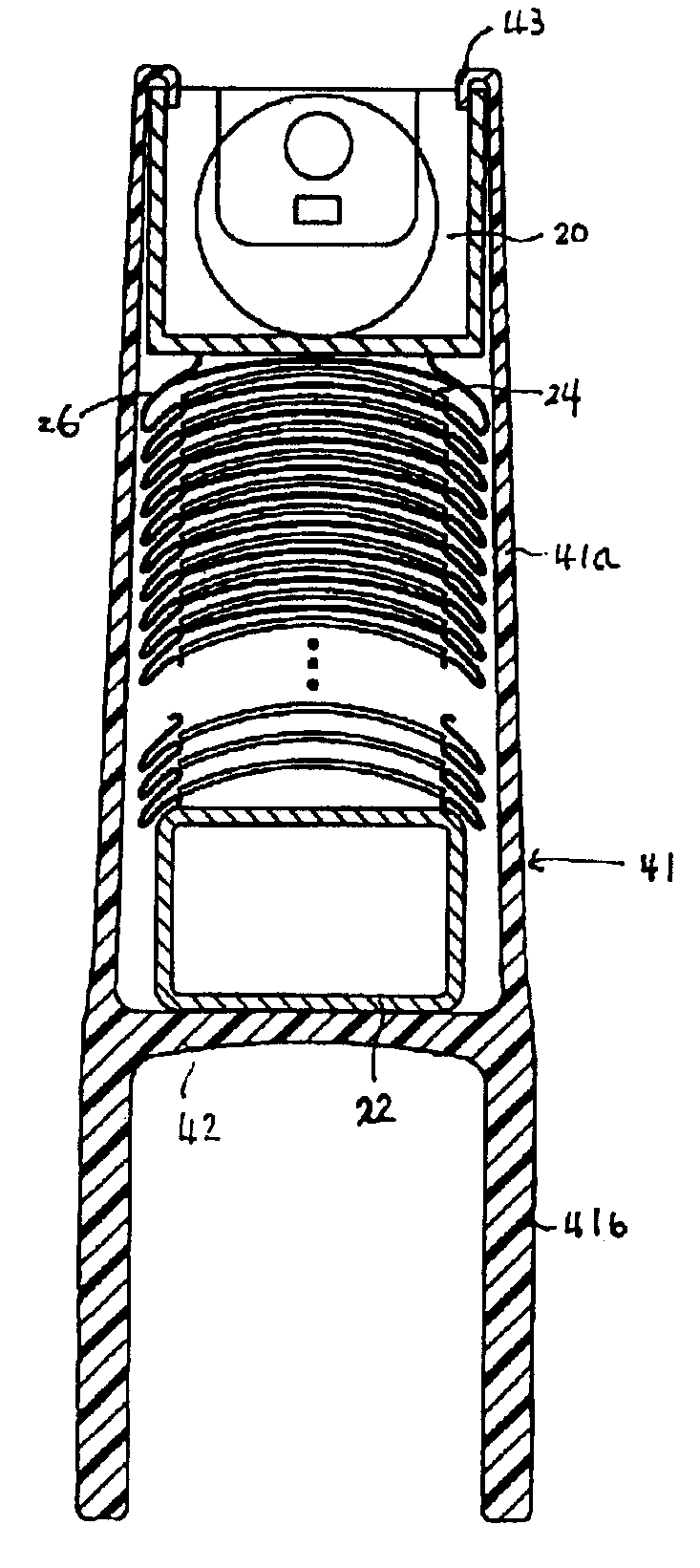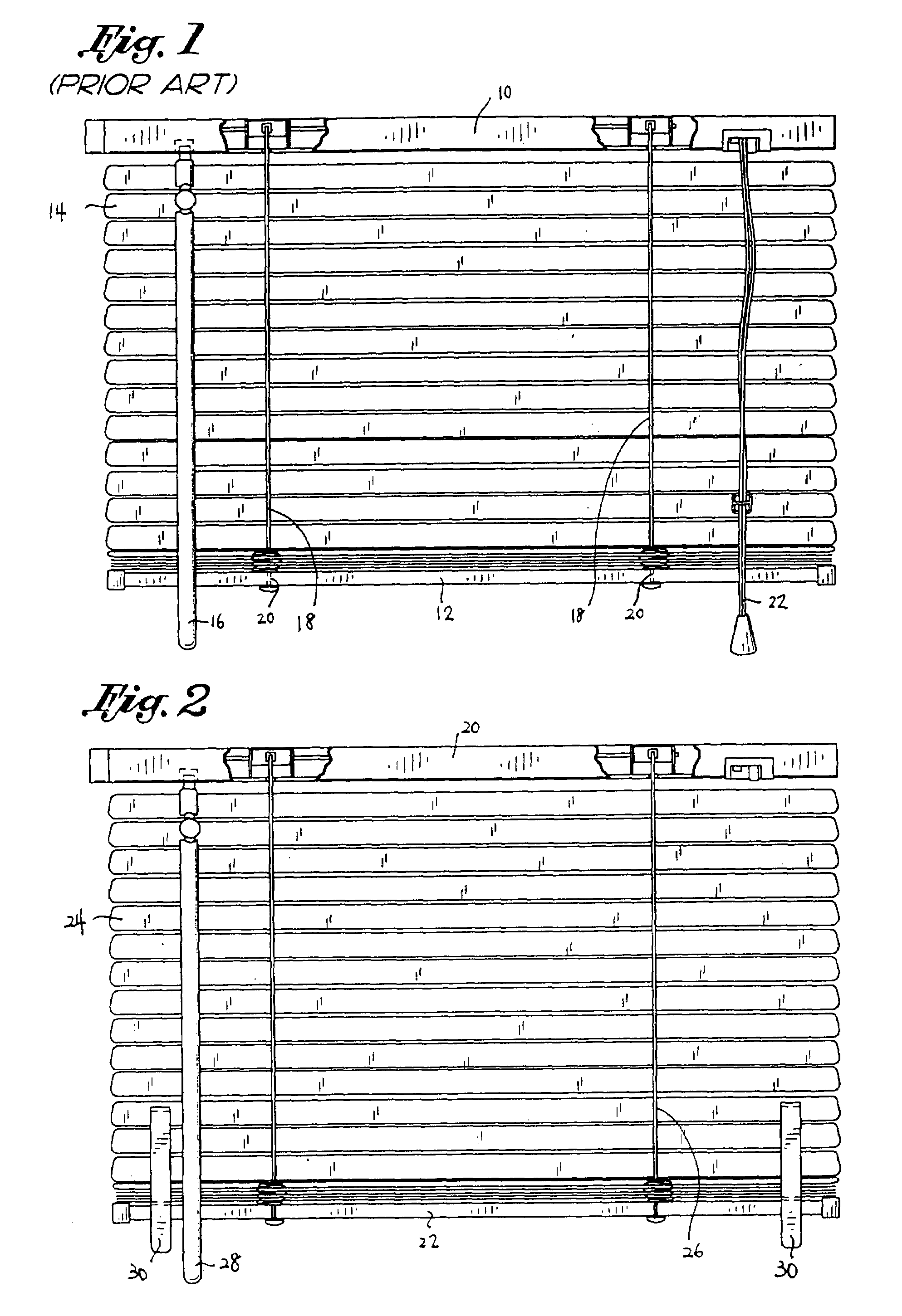Child safety blind
a child safety and blind technology, applied in the field of window blinds, can solve the problems of posing a possible safety hazard to small children, prior art cleats are prone to be unreliable in preventing cord deaths, etc., and achieve the effect of effectively preventing accidental strangulation
- Summary
- Abstract
- Description
- Claims
- Application Information
AI Technical Summary
Benefits of technology
Problems solved by technology
Method used
Image
Examples
Embodiment Construction
[0028]The present invention provides a child safety blind which can be raised to a fully open position or lowered to an extended or closed position without using the lift cord used in a conventional blind. The child safety blind is applicable to all types of horizontal blinds such as wood blinds, faux wood blinds, bamboo blinds, mini blinds, metallic blinds, fabric cell blinds, and vinyl blinds and for purposes of this application, the term blind shall include all of the same. FIG. 2 depicts one embodiment of the child safety blind provided by the present invention. As shown in FIG. 2, the child safety blind comprises a head rail 20, a bottom rail 22, and a plurality of slats 24 horizontally extending between the head rail 20 and the bottom rail 22. The child safety blind further comprises a pair of ladder tapes 26. Each of the ladder tapes 26 comprises a plurality of steps or loops, and each slat 24 extends through a pair of corresponding steps of the ladder tapes 26. The blind als...
PUM
 Login to View More
Login to View More Abstract
Description
Claims
Application Information
 Login to View More
Login to View More - R&D
- Intellectual Property
- Life Sciences
- Materials
- Tech Scout
- Unparalleled Data Quality
- Higher Quality Content
- 60% Fewer Hallucinations
Browse by: Latest US Patents, China's latest patents, Technical Efficacy Thesaurus, Application Domain, Technology Topic, Popular Technical Reports.
© 2025 PatSnap. All rights reserved.Legal|Privacy policy|Modern Slavery Act Transparency Statement|Sitemap|About US| Contact US: help@patsnap.com



